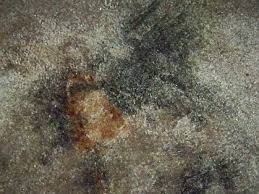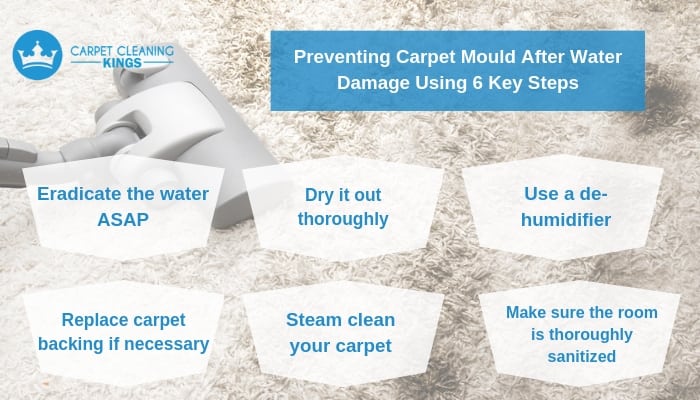 Carpet mould is a big problem for water damaged carpets. Not only is it unsightly and smelly, it can also cause respiratory issues in young children and/or the elderly, or those with problematic breathing conditions such as asthma. The trouble is that it doesn’t take much water to kick start carpet mould. In fact a touch of dampness and a dark space is all it needs to grow rapidly.
Carpet mould is a big problem for water damaged carpets. Not only is it unsightly and smelly, it can also cause respiratory issues in young children and/or the elderly, or those with problematic breathing conditions such as asthma. The trouble is that it doesn’t take much water to kick start carpet mould. In fact a touch of dampness and a dark space is all it needs to grow rapidly.
The other issue is that in porous material such as carpet and carpet padding, you mightn’t even know it’s there until it’s too late and your carpet is ruined. With this in mind, just how do you prevent carpet mould growth after water damage? Here are 6 keys steps.
Eradicate the water ASAP
Aside from damp and warmth, the only other thing that carpet mould needs to thrive is time. Carpet mould can develop within 24 hours, so all water needs to be removed (extracted) from your carpet fast. If it’s a small amount of water you might want to use a standard wet and dry vacuum. However for larger water problems you really should call in the pros. They have specialised equipment which can suck up all the excess water quickly.
Dry it out thoroughly
Just as when extracting water, speed is of the essence when drying it out. Remember carpet mould thrives in damp places so the aim is to get it dry as quickly as possible. If it’s a sunny or warm day, open all doors and windows to aid ventilation and use fans to speed up the drying process. Even when you think it’s completely dry, chances are it isn’t. You should keep fans going 24 hours a day for at least a week to give you the best chance of saving your carpet.
Use a de-humidifier
De-humidifiers remove excess water which in turn will make the air feel cooler. This limits the chance of mould growth while also speeding up the drying process.
Replace carpet backing if necessary
It’s fair to say that in the vast majority of cases when your carpet padding has been in direct contact with water it will need replacing. Even if your carpet itself appears fine, mould and mildew can still breed in the carpet backing. If you think that it’s a lot of hassle, remember, it’s far cheaper and easier to replace the padding than it is to replace the entire carpet, so if in doubt, throw it out!
Steam clean your carpet
By now you’ve either changed the carpet backing or are sure that it isn’t in any way damaged. This being the case you should look to give your carpet a thorough steam clean. This properly sanitises and deodorises the area to ensure that your carpet won’t still be a breeding ground for harmful mould spores. Again you may at this point want to hire a professional carpet cleaning company who can ensure the right levels of steam and water penetrate your carpet, but also that all the water is extracted.
Make sure the room is thoroughly sanitised
Finally before you relay your carpet and replace your furniture you need to make sure that everything touched by water is thoroughly sanitised. This includes walls, hard flooring, and other surfaces such as base boards. Use soap and water to wipe down and dry any surfaces that were directly in the line of the flood. When dry and sanitised you can relay your carpet.
If you’d like more information on how to protect your carpet after flood damage and eradicate carpet mould, or you’re experiencing a flood right now and need help, call Carpet Cleaning Kings on 1300 7000 75. We are here for you 24/7, 365 days a year.



